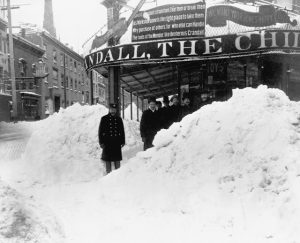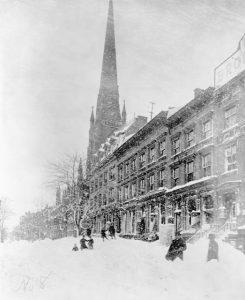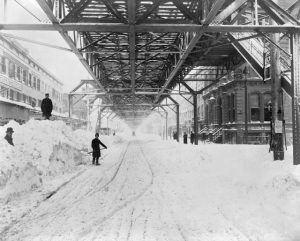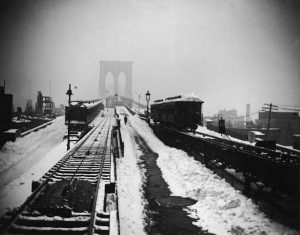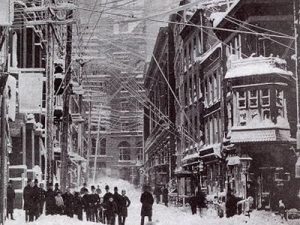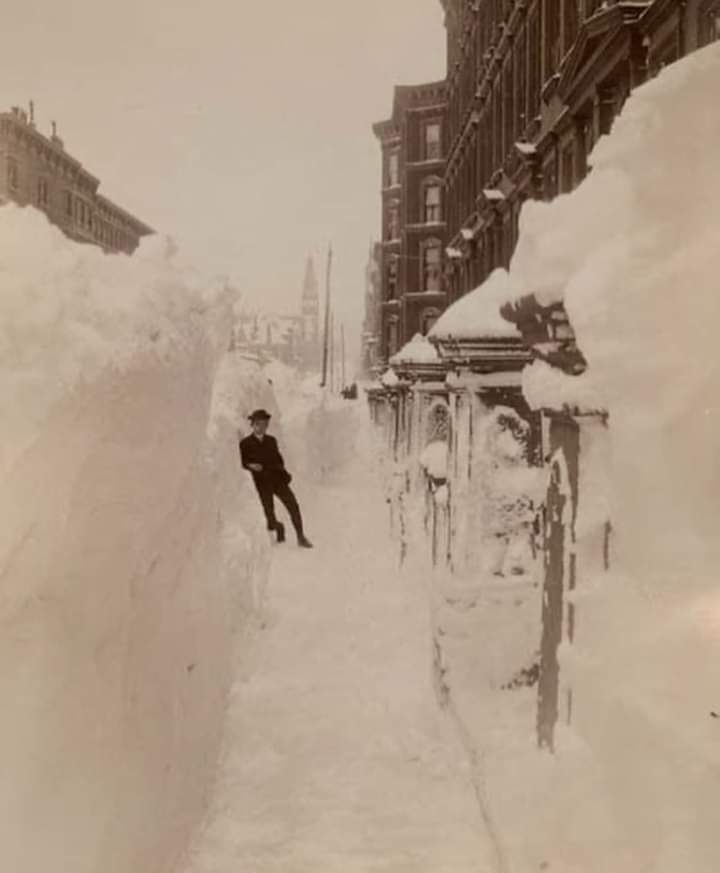
The Great Blizzard of 1888, Madison Avenue and 40th Street, New York City.

The Great Blizzard of 1888, a winter tempest that battered the Atlantic coast of the United States from the Chesapeake Bay to Maine in March 1888, left an indelible mark in history. Inflicting over $20 million in property damage in New York City alone and claiming the lives of more than 400 people, including about 100 sailors, the blizzard was a catastrophic event along the Eastern Seaboard.
Following a mild winter, a convergence of a western snowstorm and a southern warm front gave rise to one of the most severe winter storms in American history. The onslaught commenced on the night of Sunday, March 11, with New York City accumulating 10 inches (250 mm) of snow by Monday morning. The storm persisted, eventually enveloping the city in a 22-inch (550 mm) snow blanket, while other regions experienced staggering accumulations of 40 to 50 inches (1,000 to 1,250 mm). Relentless high winds, coupled with temperatures well below freezing, intensified the perilous conditions. New York witnessed winds averaging 40 miles (65 km) per hour, gusting up to 80 miles (130 km) per hour, resulting in the destruction of power and telegraph lines and colossal snowdrifts reaching heights of 50 feet (15 meters).
Despite the escalating weather, many New Yorkers unaccustomed to blizzard conditions attempted to navigate the city for work. As the situation deteriorated throughout Monday, workers found themselves stranded on the streets, trains, elevated transit cars, and at their workplaces. With closures affecting shops, government offices, courts, Wall Street businesses, and even the Brooklyn Bridge, people sought refuge in overflowing saloons, hotels, and prisons.
The profound impact of the blizzard led survivors to gather annually until 1969 to commemorate its anniversary. Recognizing the vulnerabilities exposed by the storm, officials implemented measures such as placing power and telegraph lines, as well as public transit, underground. The Great Blizzard of 1888 became a transformative event that reshaped urban planning and disaster preparedness in the years to come.
Here are some more incredible of those days
